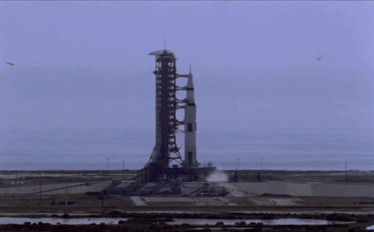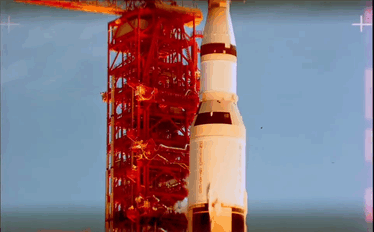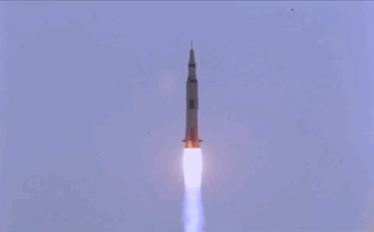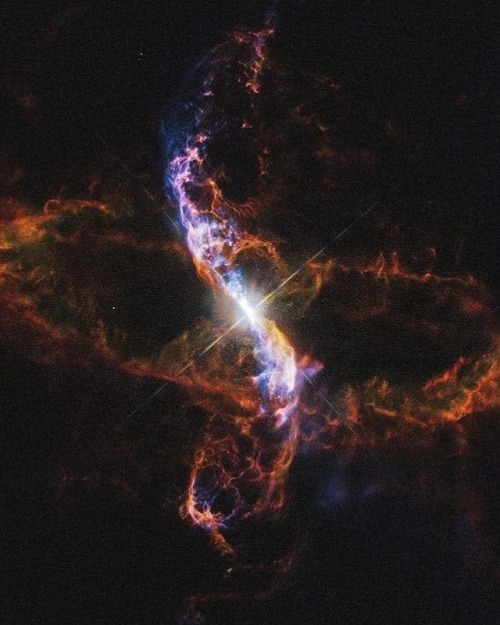What’s The Deal About gravitational Waves?
What’s the deal about gravitational waves?
I guess y’all have heard about the discovery gravitational waves, and the recent observation of gravity waves linked to a visual observation as well.
What are they?
Gravitational waves are disturbances in space-time that are caused by objects in motion. Objects with mass distort spacetime, and thus when they move they also create disturbances. Think moving your hand along the surface of a pond - your hand’s motion creates waves and ripples in the water. Gravity waves were theorized by Einstein when he published his paper on General Relativity in the mid 1900s, and they were finally confirmed by LIGO about a year or two ago. The discovery of gravitational waves was considered the last major test of General Relativity, meaning that everything it’s predicted has held up to testing. As these gravity waves pass through space, they stretch it in one direction and compress it in the other. Check these two gifs out for a good visualization:



What is LIGO?
Ligo, or Laser Inferometer Gravity-wave Observatory, is one of three gravity wave observatories in the world. It works by splitting a laser into two perpendicular components. The light waves travel down long tunnels, bounce off a mirror, and recombine at the intersection. The interference pattern of the two light waves is measured (interference is how two light waves interact with each other - if the peaks and troughs line up, they cancel, but if the peaks line up they add together). When a gravitational wave passes by, it stretches everything in one direction while compressing it in the other direction, then vice versa. This causes a change in the interference pattern, which is then measured. Here’s a good diagram:

If you want more information about gravity waves, check out these videos:
Sources: Image 1 2 3 4, check out the links for good explanations.
Let me know if y’all have any questions!!! I’m happy to answer them.
More Posts from Xyhor-astronomy and Others

A movie showing the dynamics of the inner part of the Crab Nebula made using the Chandra X-ray Observatory.
Credit: NASA/CXC/ASU/J.Hester et al.

Hubble peeks inside a stellar cloud
These bright stars shining through what looks like a haze in the night sky are part of a young stellar grouping in one of the largest known star formation regions of the Large Magellanic Cloud (LMC), a dwarf satellite galaxy of the Milky Way. The image was captured by the NASA/ESA Hubble Space Telescope’s Wide Field Planetary Camera 2.
The stellar grouping is known to stargazers as NGC 2040 or LH 88. It is essentially a very loose star cluster whose stars have a common origin and are drifting together through space. There are three different types of stellar associations defined by their stellar properties. NGC 2040 is an OB association, a grouping that usually contains 10–100 stars of type O and B — these are high-mass stars that have short but brilliant lives. It is thought that most of the stars in the Milky Way were born in OB associations.
There are several such groupings of stars in the LMC, including one previously featured as a Hubble Picture of the Week. Just like the others, LH 88 consists of several high-mass young stars in a large nebula of partially ionised hydrogen gas, and lies in what is known to be a supergiant shell of gas called LMC 4.
Over a period of several million years, thousands of stars may form in these supergiant shells, which are the largest interstellar structures in galaxies. The shells themselves are believed to have been created by strong stellar winds and clustered supernova explosions of massive stars that blow away surrounding dust and gas, and in turn trigger further episodes of star formation.
The LMC is the third closest galaxy to our Milky Way. It is located some 160 000 light-years away, and is about 100 times smaller than our own.
This image, which shows ultraviolet, visible and infrared light, covers a field of view of approximately 1.8 by 1.8 arcminutes.
A version of this image was entered into the Hubble’s Hidden Treasures Image Processing Competition by contestant Eedresha Sturdivant. Hidden Treasures is an initiative to invite astronomy enthusiasts to search the Hubble archive for stunning images that have never been seen by the general public.
These bright stars shining through what looks like a haze in the night sky are part of a young stellar grouping in one of the largest known star formation regions of the Large Magellanic Cloud (LMC), a dwarf satellite galaxy of the Milky Way. The image was captured by the NASA/ESA Hubble Space Telescope’s Wide Field Planetary Camera 2.
The stellar grouping is known to stargazers as NGC 2040 or LH 88. It is essentially a very loose star cluster whose stars have a common origin and are drifting together through space. There are three different types of stellar associations defined by their stellar properties. NGC 2040 is an OB association, a grouping that usually contains 10–100 stars of type O and B — these are high-mass stars that have short but brilliant lives. It is thought that most of the stars in the Milky Way were born in OB associations.
There are several such groupings of stars in the LMC, including one previously featured as a Hubble Picture of the Week. Just like the others, LH 88 consists of several high-mass young stars in a large nebula of partially ionised hydrogen gas, and lies in what is known to be a supergiant shell of gas called LMC 4.
Over a period of several million years, thousands of stars may form in these supergiant shells, which are the largest interstellar structures in galaxies. The shells themselves are believed to have been created by strong stellar winds and clustered supernova explosions of massive stars that blow away surrounding dust and gas, and in turn trigger further episodes of star formation.
The LMC is the third closest galaxy to our Milky Way. It is located some 160 000 light-years away, and is about 100 times smaller than our own.
This image, which shows ultraviolet, visible and infrared light, covers a field of view of approximately 1.8 by 1.8 arcminutes.
A version of this image was entered into the Hubble’s Hidden Treasures Image Processing Competition by contestant Eedresha Sturdivant. Hidden Treasures is an initiative to invite astronomy enthusiasts to search the Hubble archive for stunning images that have never been seen by the general public.
ESA/Hubble, NASA and D. A Gouliermis. Acknowledgement: Flickr user Eedresha Sturdivant
https://www.spacetelescope.org/images/potw





Apollo 11 Launch
Solar System: Things To Know This Week
Weather permitting, you can observe the Moon most nights, unless it’s a new moon, when the lighted side of the Moon faces away from Earth. The Moon is by far the brightest object in the night sky and there’s plenty to see. But this week is special…

…October 28 is International Observe the Moon Night (also known as InOMN).
Here’s all you need to know to join in and celebrate:
1. One Planet. One Moon. One Night.

Everyone on Earth is invited to join the celebration by hosting or attending an InOMN event and uniting on one day each year to look at and learn about the Moon together.
2. What’s Up?

October’s night skies are full of sights, from the first quarter Moon on InOMN to Saturn making a cameo appearance above the Moon October 23 and 24. Watch our What’s Up video for details.
3. Be Social

Hundreds of events are planned around the globe. Click the top link on this page for a handy map. You can also register your own event.
4. Don’t Just Stand There

Here are some activities for enhanced Moon watching.
5. Impress Your Friends with Moon Knowledge

Download InOMN flyers and handouts, Moon maps and even some pre-made presentations. There’s even a certificate to mark your participation.
6. Guide to the Face of the Moon

Almost dead center on the Earth-facing side of the Moon is the Surveyor 6 robotic spacecraft impact side. Apollo 12 and 14 are a bit to the left. And Apollo 11 - the first steps on the moon - are to the right. This retro graphic tells the whole story.
7. Moon Shots

NASA photographers have done some exceptional work capturing views of the Moon from Earth. Here are a few galleries:
You can’t have a solar eclipse without the Moon.
The 2016 “Supermoon” was pretty spectacular.
The Moon gets eclipsed, too.
That IS a Moon - AND the International Space Station.
The Moon is always a great photo subject.
Some spooky shots of the 2014 “Supermoon.”
And 2013.
Tips from a NASA pro for photographing the Moon.
8. Walking on the Moon

Twelve human beings walked on the face of the Moon. Here are some of the best shots from the Apollo program.
9. Moon Watch

Our Lunar Reconnaissance Orbiter is up there right now, mapping the moon and capturing some spectacular high-resolution shots.
10. Keep Exploring

Make our Moon portal your base for further lunar exploration.
Check out the full version of ‘Ten Things to Know This Week’ HERE.
Make sure to follow us on Tumblr for your regular dose of space: http://nasa.tumblr.com.

False color image of Uranus taken with the Hale Telescope and the Palomar Observatory. The rings are the red pieces.
Image credit: Palomar Observatory & Hale telescope

R Aquarii is known as a symbiotic star made up of a white dwarf–red giant binary pairing. These two stars are tied in orbit around one another with a period of around 44 years. The primary star is a variable red giant, meaning it changes temperature and undergoes drastic brightness fluctuations. The secondary star is a white dwarf that sucks in material from the red giant. Some of the extra material is sometimes ejected, forming the incredibly stunning nebula surrounding it.
(Credit: Hubble Space Telescope/Judy Schmidt)










Ask Ethan: Why don’t we build a telescope without mirrors or lenses?
“Why do we need a lens and a mirror to make a telescope now that we have CCD sensors? Instead of having a 10m mirror and lens that focus the light on a small sensor, why not have a 10m sensor instead?”
Every time you shine light through a lens or reflect it off of a mirror, no matter how good it is, a portion of your light gets lost. Today’s largest, most powerful telescopes don’t even simply have a primary mirror, but secondary, tertiary, even quaternary or higher mirrors, and each of those reflections means less light to derive your data from. As CCDs and other digital devices are far more efficient than anything else, why couldn’t we simply replace the primary mirror with a CCD array to collect and measure the light? It seems like a brilliant idea on the surface, and it would, in fact, gather significantly more light over the same collecting area. True, CCDs are more expensive, and there are technical challenges as far as applying filters and aligning the array properly. But there’s a fundamental problem if you don’t use a mirror or lens at all that may turn out to be a dealbreaker: CCDs without lenses or mirrors are incapable of measuring the direction light is coming from. A star or galaxy would appear equally on all portions of your CCD array at once, giving you just a bright, white-light image on every single CCD pixel.
It’s a remarkable idea, but there’s a good physical reason why it won’t pan out. For the foreseeable future, we still need optics to make a telescope! Find out why on this week’s Ask Ethan.


NGC 7635, also known as the bubble Nebula.







10 Spacetime Mysteries That Quantum Gravity Could Solve
“4.) In most approaches to quantum gravity, space-time is not fundamental but made of something else. That might be strings, loops, qbits, or some variant of space-time “atoms” which appear in condensed-matter based approaches. The individual constituents, however, can only be resolved when probed with extremely high energies, far beyond what we can achieve on Earth.”
What is the fundamental nature of the Universe? When it comes to General Relativity, our answer is matter and energy on one hand, and spacetime on the other. But there’s another side to that story: a quantum one. While matter and energy can be discretized into quanta, our notion of spacetime is purely classical. But depending on what our true, fundamental theory of quantum gravity actually is, it could have incredible implications for our Universe. Perhaps we have tiny little black holes popping in and out of existence on a continuous basis; perhaps the vacuum of space isn’t entirely transparent to light; perhaps time turns into space at some level; perhaps wormholes and baby Universes are real. These are mysteries that are currently unresolved, but quantum gravity could provide the answer.
What are the mysteries, and what does it all mean? Sabine Hossenfelder explores, with a fantastic video!

An irregular island
This image, courtesy of the NASA/ESA Hubble Space Telescope’s Advanced Camera for Surveys (ACS), captures the glow of distant stars within NGC 5264, a dwarf galaxy located just over 15 million light-years away in the constellation of Hydra (The Sea Serpent).
Dwarf galaxies like NGC 5264 typically possess around a billion stars — just one per cent of the number of stars found within the Milky Way. They are usually found orbiting other, larger, galaxies such as our own, and are thought to form from the material left over from the messy formation of their larger cosmic relatives.
NGC 5264 clearly possesses an irregular shape — unlike the more common spiral or elliptical galaxies — with knots of blue star formation. Astronomers believe that this is due to the gravitational interactions between NGC 5264 and other galaxies nearby. These past flirtations sparked the formation of new generations of stars, which now glow in bright shades of blue.
https://www.spacetelescope.org/images/potw
-
 thefairywalker liked this · 5 years ago
thefairywalker liked this · 5 years ago -
 flipflopfloe reblogged this · 6 years ago
flipflopfloe reblogged this · 6 years ago -
 rjaiswar liked this · 7 years ago
rjaiswar liked this · 7 years ago -
 orangojimbo5 liked this · 7 years ago
orangojimbo5 liked this · 7 years ago -
 millerscritters reblogged this · 7 years ago
millerscritters reblogged this · 7 years ago -
 homoboyopoyo-blog liked this · 7 years ago
homoboyopoyo-blog liked this · 7 years ago -
 hadesgodofthehell liked this · 7 years ago
hadesgodofthehell liked this · 7 years ago -
 errorc2-blog liked this · 7 years ago
errorc2-blog liked this · 7 years ago -
 kitkat-kate-kathy liked this · 7 years ago
kitkat-kate-kathy liked this · 7 years ago -
 infernohipster-blog liked this · 7 years ago
infernohipster-blog liked this · 7 years ago -
 fr3tt3r-blog liked this · 7 years ago
fr3tt3r-blog liked this · 7 years ago -
 chikachikawhoa liked this · 7 years ago
chikachikawhoa liked this · 7 years ago -
 takasirius-blog liked this · 7 years ago
takasirius-blog liked this · 7 years ago -
 mockeldorado liked this · 7 years ago
mockeldorado liked this · 7 years ago -
 mockeldorado reblogged this · 7 years ago
mockeldorado reblogged this · 7 years ago -
 pyromaniatic liked this · 7 years ago
pyromaniatic liked this · 7 years ago -
 angstroooms liked this · 7 years ago
angstroooms liked this · 7 years ago -
 blog-dzepxich liked this · 7 years ago
blog-dzepxich liked this · 7 years ago -
 thisisanewstart reblogged this · 7 years ago
thisisanewstart reblogged this · 7 years ago -
 xyhor-astronomy reblogged this · 7 years ago
xyhor-astronomy reblogged this · 7 years ago -
 bazsarose liked this · 7 years ago
bazsarose liked this · 7 years ago -
 lutefisk-kingdom liked this · 7 years ago
lutefisk-kingdom liked this · 7 years ago -
 ashnalciencia reblogged this · 7 years ago
ashnalciencia reblogged this · 7 years ago -
 aesthalaxy reblogged this · 7 years ago
aesthalaxy reblogged this · 7 years ago -
 themyth liked this · 7 years ago
themyth liked this · 7 years ago -
 quantum-questions liked this · 7 years ago
quantum-questions liked this · 7 years ago -
 326aries liked this · 7 years ago
326aries liked this · 7 years ago -
 introverted-astrophile reblogged this · 7 years ago
introverted-astrophile reblogged this · 7 years ago -
 ant-le-cunt reblogged this · 7 years ago
ant-le-cunt reblogged this · 7 years ago -
 clarinetgirl99 liked this · 7 years ago
clarinetgirl99 liked this · 7 years ago -
 thehomo-sapiensagenda liked this · 7 years ago
thehomo-sapiensagenda liked this · 7 years ago -
 elyxiun reblogged this · 7 years ago
elyxiun reblogged this · 7 years ago -
 passname-and-userword reblogged this · 7 years ago
passname-and-userword reblogged this · 7 years ago -
 spooky-grapes liked this · 7 years ago
spooky-grapes liked this · 7 years ago
For more content, Click Here and experience this XYHor in its entirety!Space...the Final Frontier. Let's boldly go where few have gone before with XYHor: Space: Astronomy & Spacefaring: the collection of the latest finds and science behind exploring our solar system, how we'll get there and what we need to be prepared for!
128 posts